Terragen 4.5 Release builds are now available.
Default Shader updates
The Default Shader has been updated for better integration with PBR workflows. “Metalness” textures are now supported for 3D models created with the Metalness/Roughness workflow. The new Roughness tab allows you to choose from 3 different specular roughness models, including GGX, Beckmann and a legacy option for backward compatibility with earlier versions. Both roughness and glossiness maps are supported; a checkbox allows you to invert glossiness maps to work as roughness. Fresnel reflectivity is turned up by default so you can plug in roughness/glossiness textures and get realistic results right away.
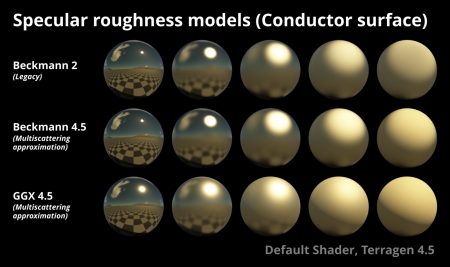
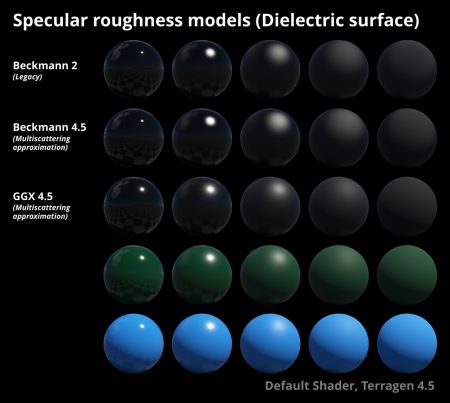
OpenColorIO (OCIO) Integration in Professional Edition
Colour managment via OpenColorIO (OCIO) has been integrated at the project level, allowing you share colour managment across multiple applications and different display devices.

Render View updates
Changes to the Render node’s tonemap and gamma settings cause an immediate update to the Render View on finished renders.
Improved motion blur
Motion blur sampling has been improved to produce higher quality images, and the effect of the motion blur checkbox has changed based on customer feedback. Disabling motion blur renders the image exactly on the camera values for that frame without any interpolation and the resulting 2D motion vector elements will be empty/black. If you want to output 2D motion vectors the new way to do this is to enable motion blur and set the motion blur method to “Vectors only, for post”.
Cloud Layer V3 and Easy Cloud GI caching
Global illumination for these types of cloud layers can now be saved in GI cache files, just as with Cloud Layer V2 and atmosphere global illumination.
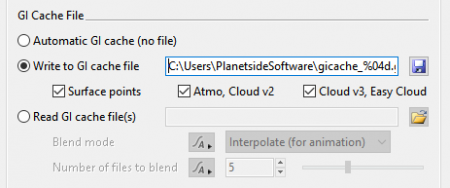
Planet Atmosphere has “Rayleigh phase function” option
“Rayleigh phase function” is a new option to produce a more realistic, physically based atmosphere. When enabled, the “Bluesky glow” settings are ignored and replaced by the Rayleigh phase function, which brightens the “Bluesky” component of the atmosphere by 50% in directions towards and opposite the sun, and darkens it by 25% in directions that are 90 degrees away from the sun.
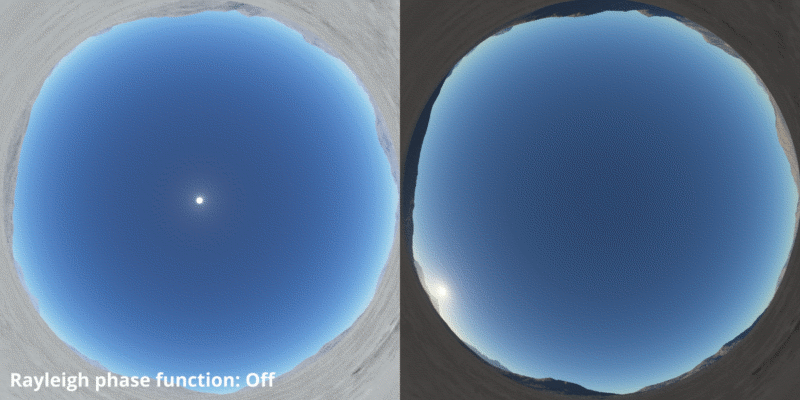
Planet Atmosphere has “Better cache radius” option
This new option improves the resolution and accuracy of the environment light (GI) in the atmosphere, which can make a big difference at twilight.
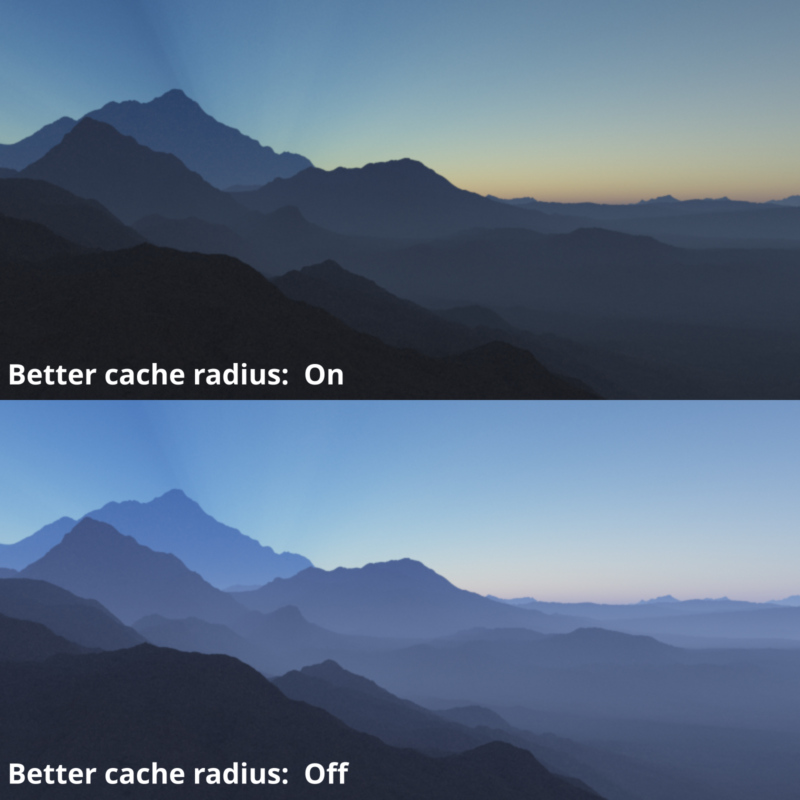
New object: Poly Sphere
A new poly sphere object has been added to the Object menu. It can be populated and has a mesh (vertex) displacer input.
Motion Designer Document (MDD) support for 3D Objects
MDD files consist of a point cache which stores a position in 3D space for every vertex in a model for every frame in an animation. This means you can animate a model in the 3D software package of your choice then save the animation in the MDD file format and import the motion into Terragen.

Recalculating Normals on 3D Objects
New options have been added to Object readers which allow for recalculating a 3D object’s normals when reading MDD files or applying mesh displacements.
Extended “Save Object File”
In the context menu of the Network View “Save Object File…” now works with Cards, Grass Clumps, Poly Spheres and Rocks, not just Object Readers. It can also be used on object nodes that are members of a population.
World-space opacity textures work for populations
The opacity of populated objects can be controlled with shaders and functon nodes working in world space (e.g. after a Transform Input Shader with “Use world space”). This allows you to create some effects that aren’t possible with a population density shader.
Measure windows displays length in miles
A UI improvement has been made to display length in miles and height in feet, in addition to the usual metric displays.

Plus many additional improvements and bug fixes!
4.5 builds are available to all users who have a current Subscription or current Maintenance on a perpetual license. If you have a perpetual license but your Maintenance expired on or after after July 1, 2020, this update is still included with your license.
We have also updated the Free Non-Commercial edition.
To download the new version or check your Maintenance status, just use “Check for Updates” in the Help menu in Terragen. Note that Terragen needs access to the Internet for this to work. Alternatively you can login to your account on our website and go to the details and downloads for your most recent Terragen purchase.
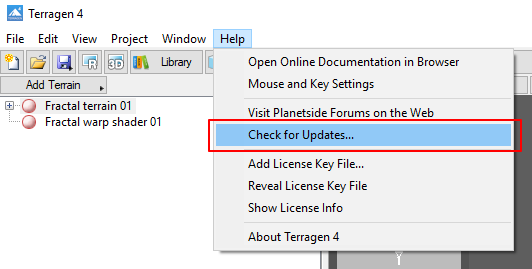
Maintenance lasts for one year from your original purchase, and then must be renewed annually to maintain access to updates. If your Maintenance expired before July 1, 2020, you’ll need to renew it in order to access version 4.5 and future updates.



